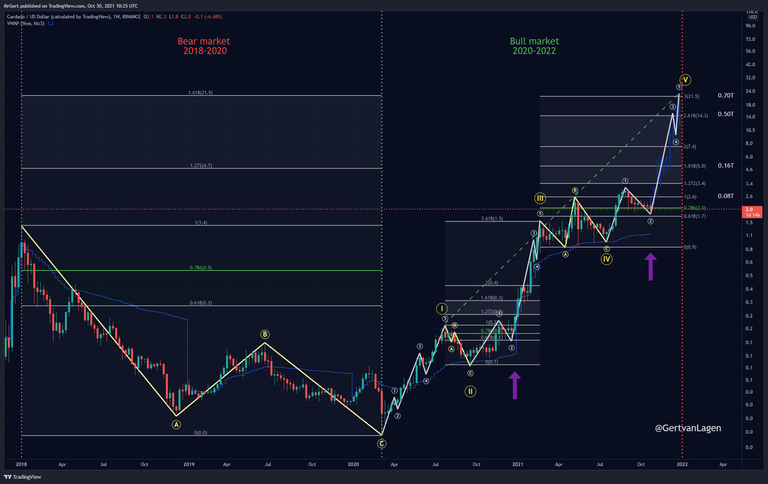With the latest dip, there has been another opportunity to fill up our bags and I bet many eyes have been watching the market day in day out. Every investor or trader has a list of assets watching, myself included and lately, while doing that, I had to realize the similarities between our beloved layer one token HIVE and ADA.
Is HIVE = ADA?
Strictly speaking of course HIVE is not equal ADA. These are two very different blockchains with their own token, with strong fundamentals and you can't put an equal sign between them.
However, at this point, if you look at these two charts, there are a lot of similarities that made me think of the future of these two tokens and gave me the idea to mark this period in my blockchain diary for future reference. It will be a lot of fun to look back in six months or a year, to see where we were once.

Let's Chart!
Of the two chains, Cardano is the oldest as it was launched in 2017, while Hive was only born in 2020. I'm not going to consider the STEEM period when it comes to analyzing price actions, it's time to move on, we have out own history now.
ADA has had a longer accumulation period at a very low price, while HIVE's real value has started to show on the chart much sooner.
Expectations regarding ADA have always been high. If you're on Twitter, you can see there's no day without thousands mentioning ADA. Last year, while most of the alts were having a run, ADA didn't do much, which made people inpatient, even though everyone knew it's just a matter of time as the value is there.
ADA reached its ATH in September last year, which was $3.1. At that time we all expected for the bull run to continue and blow off the roof, but that obviously did not happen. Now ADA is trading around $1.1 and it is a little below the 0.618 Fib level.
HIVE had its peak a bit later last year, in November to be precise, at $3.42. At the time of writing, HIVE is also trading at around $1.1 and it is between the 0.618 and 0.786 Fib level.
From ranking and market cap point of view obviously ADA is in a way better position, but let's not take that into consideration now.

How Does The Future Look Like For HIVE & ADA?
At the time of writing, basically 1 HIVE = 1 ADA. We've seen countless predictions about the future price action of ADA.
According to @GertvanLagen's analysis for 2020 - 2022, ADA could reach $22 at the end of the bull run, this year, presumably. This is a prediction based on previous price actions and using different indicators. Predictions are probabilities, which means it can happen, or not. But for the sake of the argument, let's say it's going to happen. So what about HIVE? Will HIVE follow ADA to the $22 top? Personally I would not mind at all.

Where Do I Stand In This?
Being 4 years on the chain has advantages. Being consistent for four years in content creation also has advantages. My stake on Hive puts me in a good position in case HIVE decides to go crazy, which can't be said about ADA. Not having the same advantages as on Hive, obviously my ADA stake is a lot smaller. It would be nice to hold a bag of 48.6k ADA, the equivalent of my HIVE stake, but there's a very long way there.
Will HIVE = ADA In The Future Too?
That is the big question today. These two assets met these days at the same price level accidentally, but there's a high chance they will part ways in the near future. One may outperform the other, we just don't know which one will be the outperformer.
If you're reading my post, it means you most likely have some skin in the game and you hold at least one of these two assets, if not both. So what do you think? Will HIVE outperform ADA? Or maybe ADA will outperform HIVE? What do you think?

Fun Fact
Cardano was founded back in 2017, and named after the 16th century Italian polymath Gerolamo Cardano. The native ADA token takes its name from the 19th century mathematician Ada Lovelace, widely regarded as the world’s first computer programmer. source
Gerolamo Cardano was one of the most influential mathematicians of the Renaissance, and was one of the key figures in the foundation of probability and the earliest introducer of the binomial coefficients and the binomial theorem in the Western world. He wrote more than 200 works on science. source

Posted Using LeoFinance Beta



